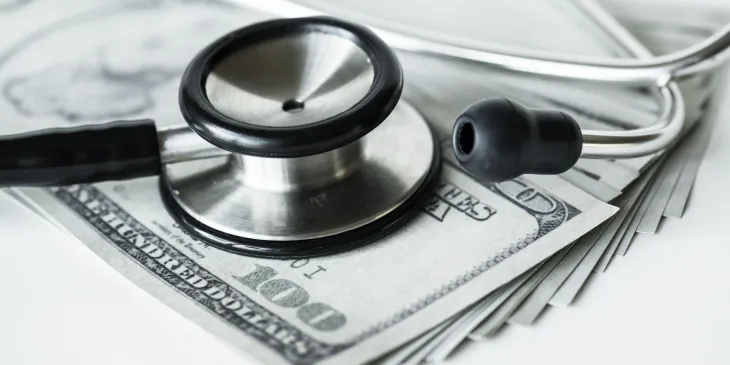American Heart Month: The Costs and Warnings of Heart Attack

One thing we don’t talk enough about is health. We care about you. So, we want you to be as healthy as possible. February is American Heart Month, so it's a great time to learn about heart disease. Heart disease affects people of all ages, from babies to adults. And heart disease and stroke are the leading causes of death for men and women.
Highlights
- 90% of all heart attacks are fatal.
- Each year, 805,000 Americans have a heart attack.
- Heart attacks can happen to anyone at any time, from infancy through adulthood.
- 39% of sudden heart attacks in children and teens under 18 occur during sports.
- Some heart attack symptoms are subtle, delaying life-saving treatment.
Heart Attack Warning Symptoms
We’re sure you’ve seen someone on television experience a heart attack. It’s easy to assume symptoms are pronounced and noticeable, but this isn’t always true. In fact, a heart attack is known as the “silent killer” because it can occur without producing any noticeable symptoms. So, knowing which signs to look for and get help in time is essential.
The main symptom of a heart attack is discomfort in the chest. This discomfort can feel different for each person and doesn't always cause severe pain that makes you grab your chest and yell. Although it can be painful for some, chest discomfort can also convey an uncomfortable pressure, squeezing sensation, or feeling of fullness in your chest.
Other symptoms are less obvious and not always associated with a heart attack, and any or all can happen with or without chest discomfort. For example:
- Discomfort in one or both arms
- Back, neck, or jaw pain
- Stomach pain
- Shortness of breath
- Cold sweats
- Nausea or lightheadedness
Chest discomfort is the most common heart attack symptom in both men and women. However, women are more likely to experience signs from the above list, like cold sweats, nausea or vomiting, shortness of breath, jaw or back pain, and lightheadedness. Unlike men, women don’t always recognize these symptoms and may pass them off as flu or acid reflux.
Sometimes, symptoms are subtle and barely noticeable until it’s too late. So don’t wait for pronounced symptoms. Instead, get help when you first experience any of these symptoms. Getting help sooner might save your life or the life of your loved one.
Average Cost of Cardiac Care
Treating a heart attack can add up quickly and be expensive. The cost can range from a few thousand dollars to more than a hundred thousand dollars, depending on the type of treatment you require.
After having a heart attack, you will likely receive additional care, such as medicine, exercise therapy, mental health support, advice on eating well, regular check-ups, heart tests, and other treatments to keep your heart working as well as possible. These therapies can cost an average of $2,000 annually, according to GoodRx Health, and this is the out-of-pocket expense – after health insurance covers a portion of the bills.
Prevention offers the best solution and is the most cost-effective option as well.
How to Prevent a Heart Attack
- Learn your risk through regular medical screenings.
- You can slash your risk by 50% if you quit smoking.
- Manage your diabetes.
- Lower your cholesterol levels and blood pressure.
- Aim for at least 22 minutes daily of moderate activity, like a brisk walk.
- Choose healthier foods lower in sodium, saturated, and trans-fat.
- Recognize the signs of heart attack and get help as soon as possible.
The Final Word
Heart attacks can happen to anyone. Learn what to look for and get help immediately if you experience any symptoms. Don’t worry about being wrong. It’s better to get prompt treatment if you suspect a heart attack than to ignore signs and delay life-saving treatment.
Recognize the need for life insurance. 50% of Americans still lack life insurance. That’s a scary thought considering these heart attack statistics. Adequate life insurance can help cover final expenses, including final medical bills, which must still be paid and fall into the family’s responsibility.
Practice the prevention tips mentioned above to lower your risk of a heart attack and protect your family financially with a life insurance policy as a precaution.
Sources
- https://www.sca-aware.org/sca-news/aha-releases-heart-and-stroke-statistics-2022-update#:~:text=There%20are%20more%20than%20356%2C000,nearly%201%2C000%20people%20each%20day.
- https://www.heart.org/en/health-topics/heart-attack/warning-signs-of-a-heart-attack
- https://www.heart.org/en/health-topics/heart-attack/warning-signs-of-a-heart-attack/heart-attack-symptoms-in-women
- https://www.heart.org/en/healthy-living/healthy-eating/heart-check-foods
- https://www.goodrx.com/health-topic/heart/manage-costs-of-heart-disease
- https://www.annuity.org/life-insurance/statistics/#:~:text=About%2050%25%20of%20Americans%20do,compared%20to%2046%25%20of%20women.




